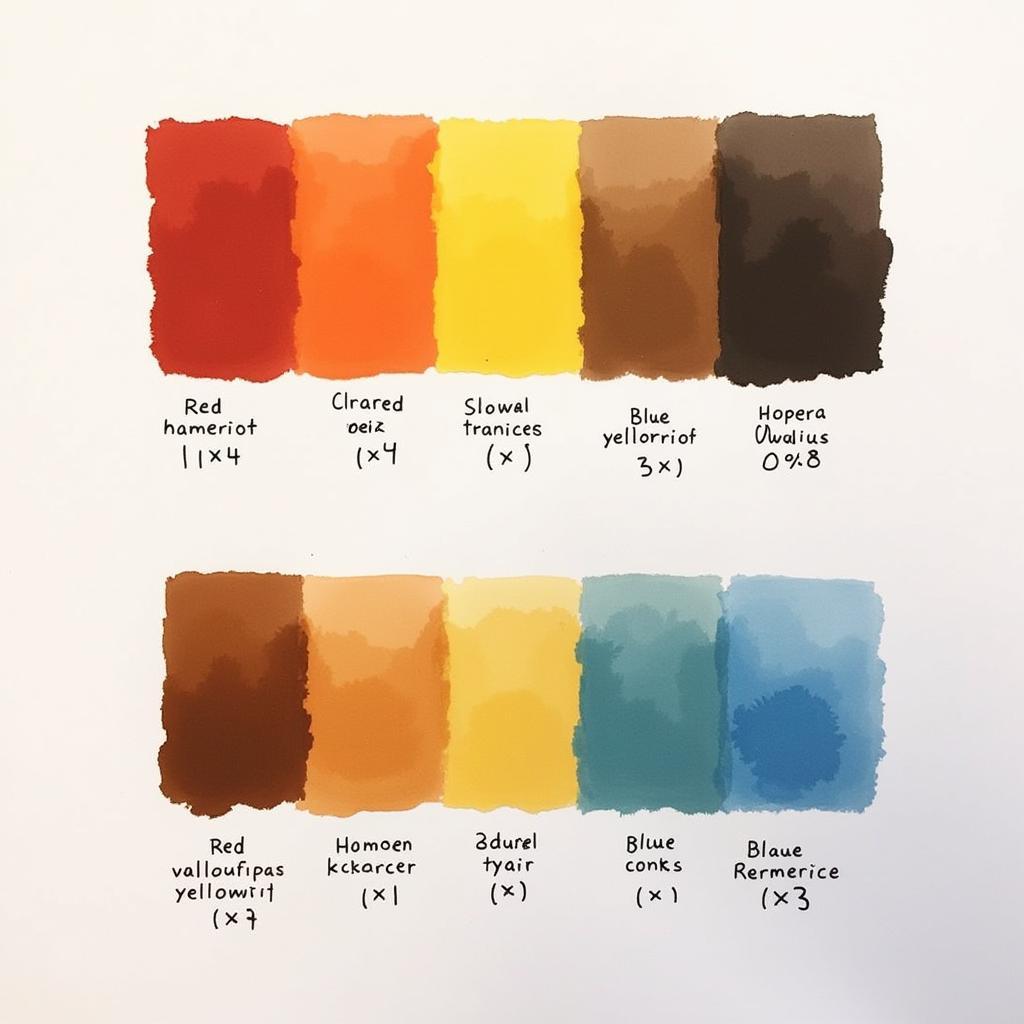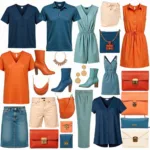Mixing brown from primary colors is a foundational skill for any artist. Understanding how to create this versatile color opens up a world of possibilities, from painting realistic landscapes to crafting the perfect shade for a portrait. It’s a simple process, but mastering it allows for a deeper understanding of color theory and mixing in general.
What are the primary colors? They are red, blue, and yellow. These colors are called “primary” because they cannot be created by mixing other colors. However, by combining them in specific ways, we can achieve a wide spectrum of secondary and tertiary colors, including brown.
Understanding Primary Colors and Their Role in Creating Brown
 Mixing Primary Colors to Create Brown
Mixing Primary Colors to Create Brown
The key to making brown is understanding how red, yellow, and blue interact. While theoretically, combining all three primaries should result in brown, the reality is a bit more nuanced. The type of blue, red, and yellow you use significantly impacts the final brown hue. For instance, a warm red with a cool blue might create a muddier brown than a cool red and a warm blue. Similarly, the proportions of each primary color play a crucial role. A little extra red will yield a warmer brown, while more blue might create a cooler, almost greyish brown.
Mixing Brown: A Step-by-Step Guide
Here’s a simple guide on how to make brown out of primary colors:
- Start with red and yellow: Begin by mixing equal parts of red and yellow to create orange. This vibrant secondary color forms the base for your brown.
- Introduce blue: Gradually add blue to the orange mixture. Start with a small amount and mix thoroughly. Observe how the color shifts from orange towards brown.
- Adjust the shade: The specific shade of brown depends on the ratio of blue. More blue will result in a cooler, darker brown. Less blue will produce a warmer, lighter brown. Experiment to achieve your desired shade.
- Refine with primary colors: If your brown is too red, add a touch of blue and yellow. If it’s too yellow, add a touch of red and blue. If it’s too blue, add a touch of red and yellow. Remember, small adjustments make a big difference.
 Different Shades of Brown Achieved from Primary Colors
Different Shades of Brown Achieved from Primary Colors
Exploring Different Brown Hues
What colors do green and red make? While not directly related to creating brown from primaries, understanding color interactions helps refine your brown mixing skills. Just as the specific red, yellow, and blue influence the final brown, subtle differences in these primaries can lead to a variety of browns. Experiment with different types of red (crimson, scarlet, etc.), yellow (lemon yellow, cadmium yellow, etc.), and blue (ultramarine, cerulean, etc.) to discover a wider spectrum of brown hues. You might be surprised by the rich variations you can achieve. You can also experiment with adding white to lighten the brown or black to darken it, further expanding your color palette.
Common Questions About Mixing Brown
What if my brown looks muddy?
If your brown appears muddy, it likely has too much blue or the primary colors you’re using aren’t balanced. Try adding a small amount of the complementary color to the dominant primary color to neutralize the muddiness. For example, if your brown is too blue, add a touch of orange.
Can I use different types of paint?
Yes, you can use different types of paint, such as acrylics, oils, or watercolors, to create brown. However, the mixing process might slightly vary depending on the paint’s properties. What does all the colors mixed together make? Ideally, brown, but the actual result can vary depending on the pigments.
What are some common uses for brown in art?
Brown is a versatile color used in various art forms, including painting, drawing, and sculpting. It’s often used to depict natural elements like earth, wood, and hair. It can also be used to create shadows, depth, and warmth in a composition. What color outdoor rug should i get? A brown rug could complement a natural setting. Consider what colors can emeralds be, which often have a greenish-brown tint, as inspiration for your color choices.
Conclusion
Mixing brown from primary colors is a fundamental skill that opens up a world of creative possibilities. By understanding the interaction of red, yellow, and blue, and by experimenting with different proportions, you can achieve a wide range of brown hues to suit your artistic needs. So, grab your paints and start mixing!
FAQ
- What are the primary colors? Red, blue, and yellow.
- What two colors make brown? Orange and blue.
- How do you make light brown with primary colors? Mix red, yellow, and blue for a base brown, then add white.
- How do you make dark brown with primary colors? Mix red, yellow, and blue for a base brown, then add a touch of black.
- What happens if I add too much blue when making brown? The brown will become cooler and darker, potentially appearing muddy.
- Can I use any shade of red, yellow, and blue to make brown? Yes, but different shades will result in different brown hues.
- What are some examples of brown in nature? Soil, wood, and animal fur.
Need help with your next painting project? Contact us! Phone: 0373298888, Email: [email protected] or visit us at 86 Cau Giay, Hanoi. We have a 24/7 customer service team. Interested in electrical wiring? You might want to know what are 120 and 277 phase colors.
